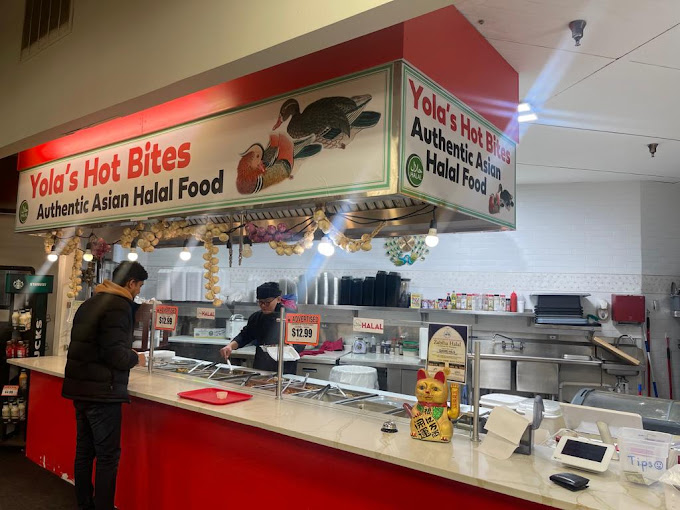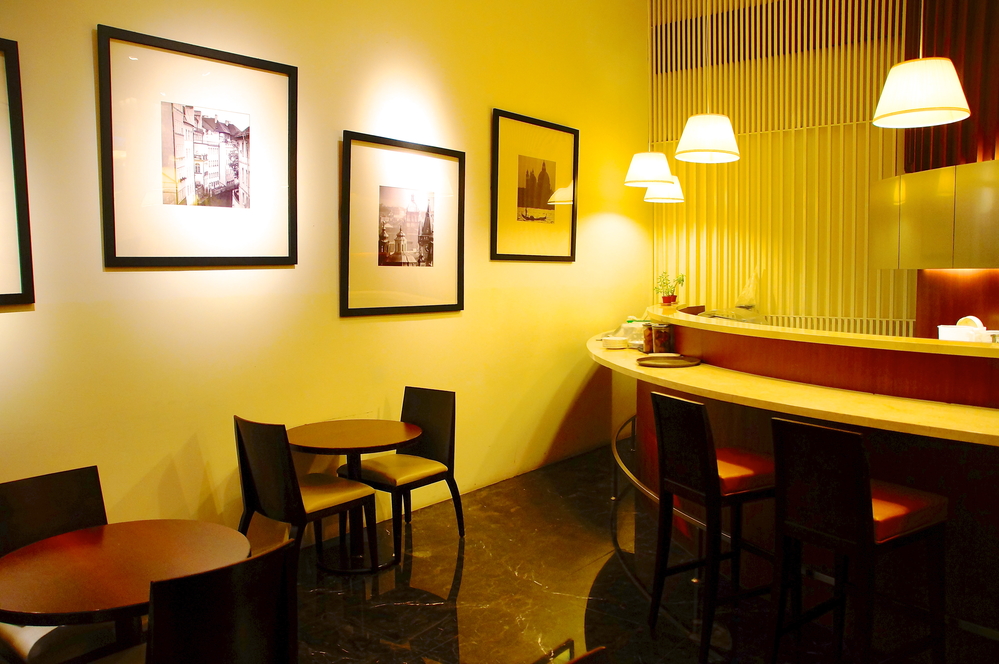Asian Fusion Restaurant: An Unique Dining Experience in the Heart of Islamabad
Savor Genuine Eastern Cuisine With a Pan-Asian Spin for a Culinary Journey
Getting started on a cooking trip with genuine Asian cuisine, improved with a Pan-Asian twist, uses a distinct chance to explore the abundant tapestry of tastes that specify the area's varied culinary practices. As you ponder these tempting meals, take into consideration the cultural stories and historical influences that form them, each bite supplying a tale waiting to be discovered. best asian restaurant Islamabad.

Discovering Pan-Asian Tastes
In the world of worldwide gastronomy, Pan-Asian cuisine stands apart for its impressive variety and the harmonious interaction of flavors from different Oriental cultures. This cooking approach celebrates the abundant customs and distinct ingredients discovered throughout the continent, creating a tapestry of tastes that is both fascinating and enjoyable. Key to Pan-Asian cuisine is its ability to balance contrasting flavors-- pleasant, salty, spicy, and sour-- while highlighting the freshness and high quality of each ingredient.
From the umami-rich soy sauce of Japan to the intense chili peppers of Thailand, Pan-Asian cuisine provides a substantial palette of flavors. These elements are commonly combined in inventive methods, boosting dishes with layers of intricacy. For example, the usage of aromatic natural herbs such as lemongrass and cilantro, typical in Vietnamese and Thai cuisine, adds a rejuvenating brightness to meals, while the consolidation of coconut milk supplies a luscious, rich structure.
The emphasis on fresh produce and fragrant seasonings guarantees that each meal is not just a feast for the taste yet likewise for the senses. Pan-Asian cuisine welcomes diners to get started on a culinary journey, checking out the vast and differed landscapes of Eastern gastronomy with every bite.
Fusion Meals to Try
While Pan-Asian cuisine is celebrated for its traditional flavors, the modern-day cooking landscape is progressively welcoming blend meals that mix these traditional elements with influences from various other areas. This innovative method not only honors the rich heritage of Oriental cookeries however additionally presents novel taste experiences that attract contemporary tastes.
A prime example of such a combination dish is the Korean-Mexican taco, where marinaded bulgogi beef is covered in a cozy tortilla, covered with kimchi and a hot gochujang-infused salsa. This combination weds the strong, savory flavors of Korea with the lively, fresh aspects of Mexican cuisine. Likewise, sushi burritos have gotten popularity, integrating the fragile creativity of Japanese sushi with the hearty, hand-held convenience of a burrito, often featuring fusion ingredients like tempura shrimp and avocado with a drizzle of wasabi mayo.
Another significant meal is Thai curry ramen, which instills the luscious, fragrant seasonings of Thai curry right into the calming brew of standard Japanese ramen, creating an unified mix that entices the senses. These blend dishes expand past simple novelty; they stand for a culinary discussion in between cultures, encouraging expedition and innovation worldwide of Pan-Asian cuisine.
Essential Components and Spices
To really appreciate Pan-Asian food, one need to comprehend the essential active ingredients and flavors that form its foundation. This varied culinary style draws from a rich tapestry of Oriental traditions, using a harmonious mix of tastes and textures. Trick ingredients consist site of soy sauce, fish sauce, and oyster sauce, which present a tasty umami deepness important to Eastern dishes. Corresponding to these are rice vinegar and mirin, providing a fragile acidity and sweet taste.
Aromatic components are pivotal, with lemongrass, garlic, and ginger being common across different Pan-Asian recipes. These active ingredients provide a fragrant base that boosts the intricacy of tastes. Spices such as celebrity anise, cardamom, and cinnamon present heat and personality, resembling impacts from regions like China and India.

Food Preparation Techniques and Tips
Grasping the art of Pan-Asian cuisine requires knowledge with its distinct food preparation techniques, each adding to the vivid tapestry of tastes this cooking practice is commemorated for. Central to these approaches is the stir-fry, a quick food preparation strategy that maintains the nutritional integrity and vivid shades of components. Using a frying pan, the stir-fry method enables for even warmth distribution, vital for achieving the particular texture and taste balance of Pan-Asian dishes.
One more fundamental method is steaming, specifically prevalent in Chinese food. This gentle method keeps the all-natural flavors and nutrients of ingredients, making it excellent for seafood and vegetables. Dumplings, a cherished staple, usually benefit from steaming, leading to soft, succulent structures.
Cooking, likewise important, passes on great smoky depths to recipes such as Oriental bulgogi or Japanese yakitori (asian restaurant isb). This method commonly involves seasoning components, allowing tastes to pass through deeply prior to texas roadhouse near me cooking over an open flame or warm plate
Last but not least, understanding the art of stabilizing flavors-- sweet, sour, salted, bitter, and umami-- is crucial. Effectively layering these components can elevate a dish from ordinary to amazing, using a complex and satisfying culinary experience that symbolizes the significance of Pan-Asian cuisine.
Eating Experiences Worldwide
Around the world, Pan-Asian cuisine supplies an exceptional dining experience, celebrated for its rich tapestry of tastes and vibrant discussions. This cooking phenomenon has actually gone beyond social boundaries, recording the hearts and palates of food enthusiasts worldwide. In worldwide cities fresh York, London, and Sydney, Pan-Asian dining establishments work as melting pots where culinary practices from check out here Thailand, Japan, China, and past converge, giving diners with an eclectic mix of recipes that highlight the region's diversity.
The global appeal of Pan-Asian cuisine hinges on its capacity to provide both authenticity and development. Cooks skillfully marry conventional ingredients such as lemongrass, soy sauce, and miso with modern techniques, causing dishes that are both refreshingly brand-new and acquainted. This fusion permits diners to start a culinary journey that appreciates heritage while accepting modernity.
Furthermore, dining experiences are elevated with thoughtfully developed environments that reflect the ethos of Pan-Asian visual appeals. From minimal Japanese-inspired insides to vivid Thai-themed rooms, each restaurant offers a special ambiance that enhances the cooking offerings. As an outcome, patrons are not simply consuming a dish however partaking in a social experience, making Pan-Asian dining a genuinely worldwide phenomenon.
Verdict
The expedition of Pan-Asian cuisine uses an extensive understanding of the detailed interplay of flavors and culinary traditions throughout Asia. By accepting combination dishes such as Thai curry ramen and sushi burritos, the cooking journey not just highlights the adaptability of traditional active ingredients however also showcases ingenious modern-day methods. This gastronomic journey, enriched by cooking techniques and crucial flavors, provides a special chance to value the multiculturalism and cooking virtuosity that specify Pan-Asian cuisine on an international range.
Getting started on a cooking trip through genuine Eastern food, boosted with a Pan-Asian spin, provides a special possibility to explore the abundant tapestry of tastes that specify the area's diverse culinary traditions.In the realm of global gastronomy, Pan-Asian food stands out for its remarkable diversity and the unified interplay of tastes from various Asian cultures. Trick to Pan-Asian food is its ability to balance contrasting flavors-- sweet, salty, spicy, and sour-- while highlighting the freshness and top quality of each active ingredient.
